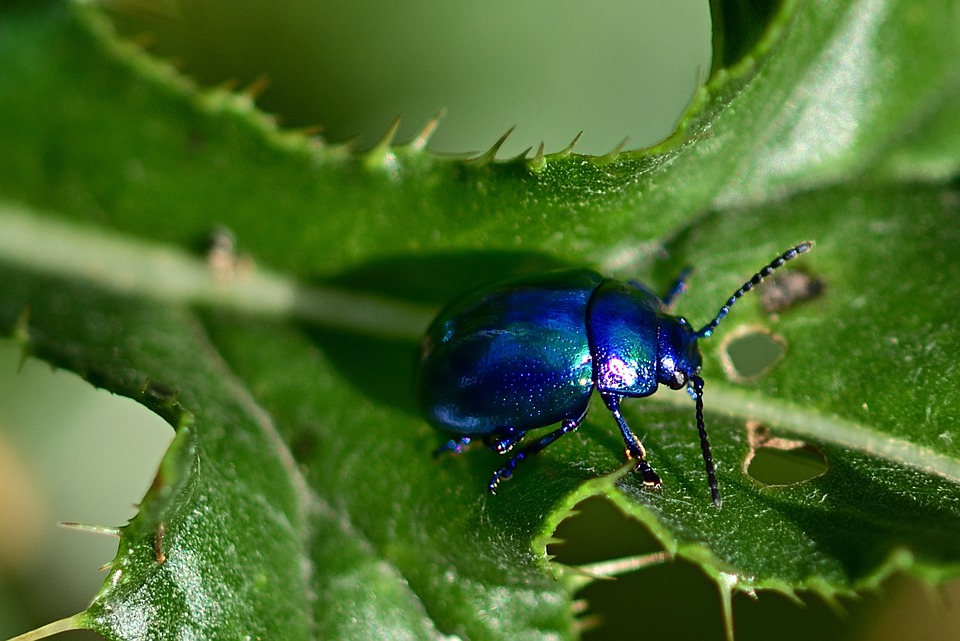Table of Contents
In 2011, the Royal Horticultural Society (RHS) confirmed the existence of a new pest called the Blue Mint Beetle and warned gardeners to watch out for them. While this insect is mostly spotted in Southern and Eastern England, the RHS warned that it could quickly breed in other parts of the country due to the rising global temperature.
The blue mint beetle, or as it is scientifically called- Chrysolina coerulans, is a little different than the more frequently seen green mint beetle. The blue variety is 7mm long and loves to feed on mint leaves. But they rarely pose a major threat to gardeners because they specifically infest wild mint plants.
The chances of finding a blue mint beetle in your plant are higher if the plant is located in a riverside habitat or any other damp area.
Identifying a Blue Mint Beetle
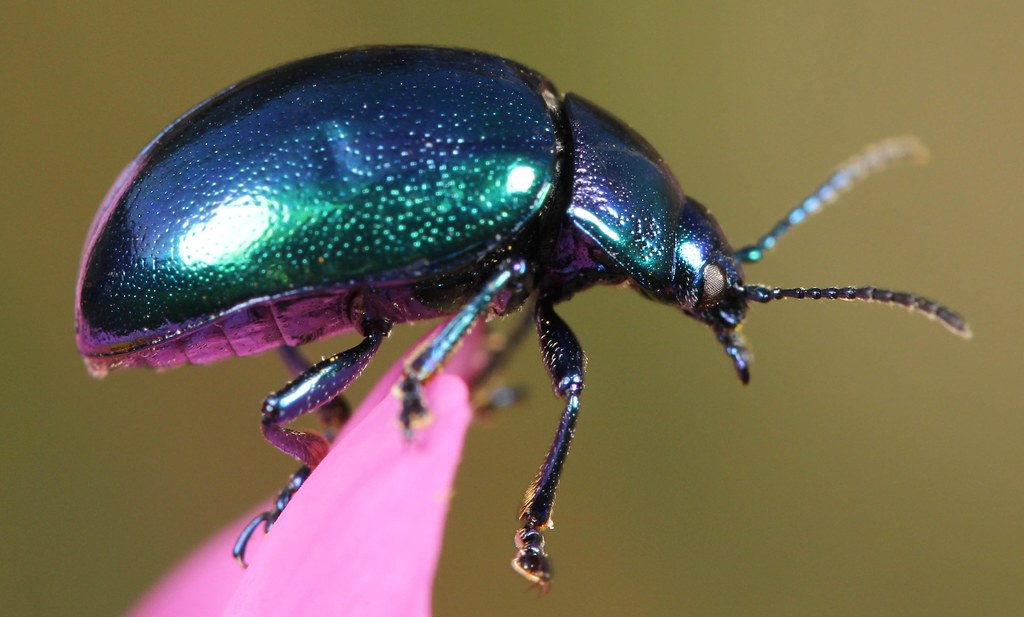
This insect belongs to the leaf beetle family, and there are at least 50,000 other species of leaf beetles in existence. The blue mint beetle is short and round in size with highly arched elytra. It has two visible antennae, but the most recognisable feature of this tiny creature is its shiny blue body with dots on it. The shine is not an exaggeration, as it looks like the insect has been dipped in deep blue lacquer.
During the spring season, their orangish-white eggs can be spotted in small clusters sticking to the underside of the leaves. After the egg hatch, the larvae, which are not yet fully grown and only 5mm in length, start feeding on the leaves to reach adulthood. They leave a distinct damage pattern on the leaves, which appear in the form of several small to big holes on the surface. The blue mint beetles are usually feeding and active between May and August. If this infestation is not stopped, then by the end of August, the leaves of the wild mint plant will be all but gone leaving only the midribs intact.
How to Deal with The Blue Mint Beetle?
The main thing about these tiny insects is that the threat they pose to the plant is nothing much to worry about. Their rate of consumption of leaves is extremely slow, so 9 out of 10 times, they are spotted right when the infestation begins, and the gardener makes them go away.
Here is how you can do the same.
1. Collect the Beetles by Hand
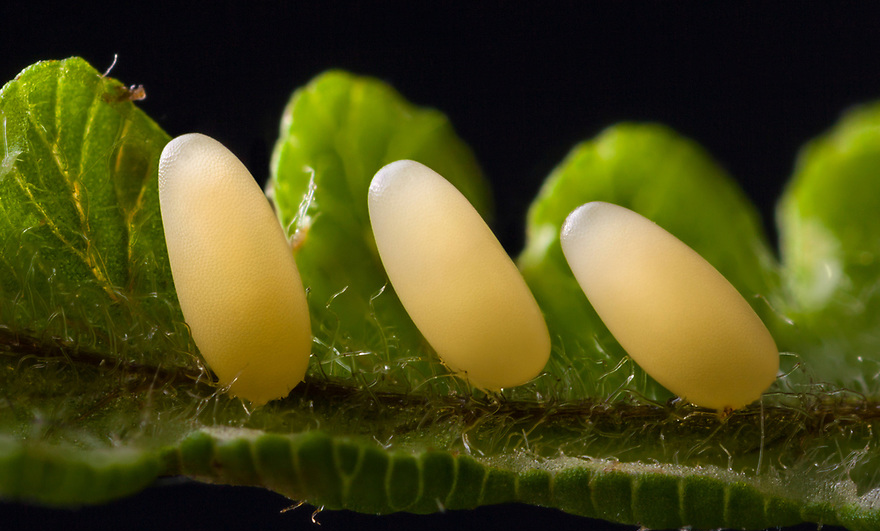
The most straightforward way to deal with this pest is to scrape it off the plant using your hand or a piece of paper. Sure, this is a time-consuming method, but this also does not involve the use of any pesticide or chemicals that might kill the beetle but end up harming your plant. Take a piece of paper and fold it into the shape of a small scraper. Now, take one stem at a time and survey all the leaves of each stem, and gently use the paper to get the beetle off the leaf. It is wise to collect the insects in a container so that they cannot crawl back or lay eggs again. Also, check the leaves for eggs and remove them as well. You can exterminate the collected pests using any chemical or just burn them.
2. Spray Soapy Water on The Plant
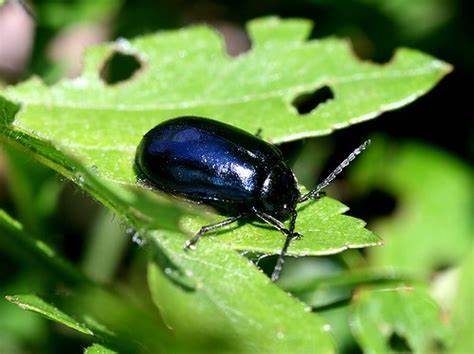
Chemical remedies can affect the health of the plant at a time, and that is why many gardeners are reluctant to use them. There do exist natural methods to keep pests like blue mint beetles in check, but they will take more time to show results such as this one. In a spray bottle, mix some water with liquid soap. The resulting liquid does not have to be frothy but fragrant. The strong smell of the soap will drive the beetles away. To see favourable results, the plants have to be sprayed with this solution at least twice every day for a week.
3. Apply Some Neem Oil
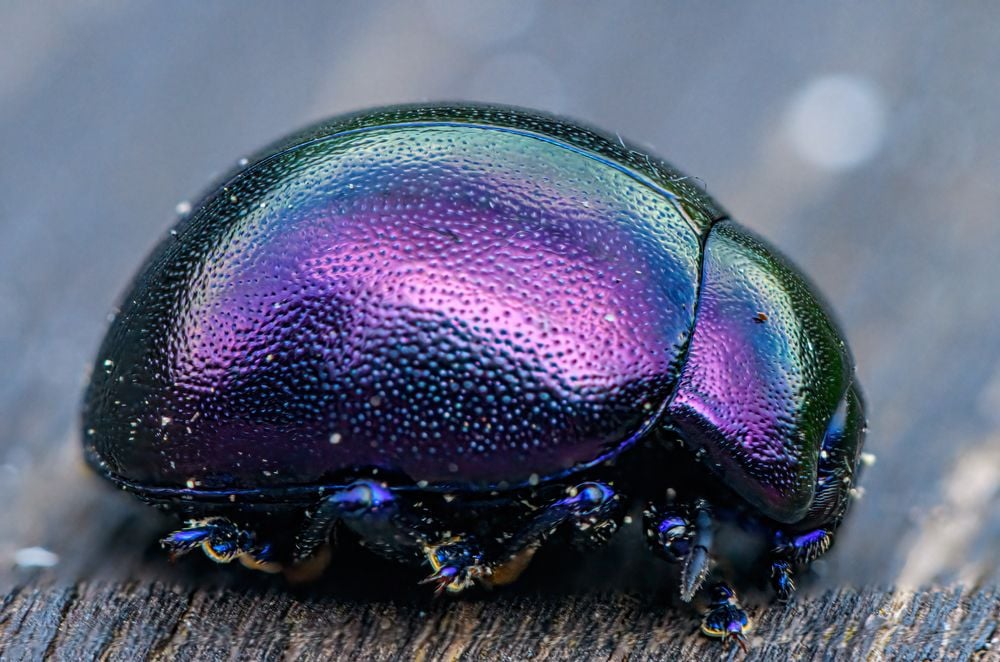
Neem is one of the best insect repellents out there. It is not only an easily available herb, but it also is effective on hundreds of pest species. On top of that, neem is medicinal and thus harmless if consumed by children or pets. The health of the plant itself is not harmed. Therefore applying the oil of the neem plant is an excellent method to get rid of the blue mint beetle. The best way to use it on the mint plant is to spray the oil directly on the leaves and reapply twice or thrice a day until all the beetles are gone.
4. Put Pyrethrin
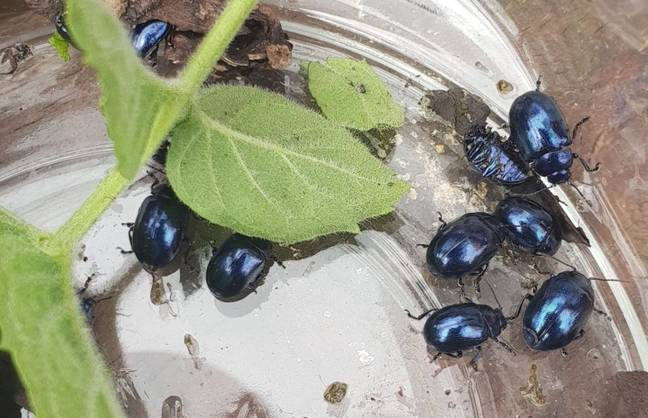
Pyrethrin is an organic insecticide that is made from natural substances found in only one species of chrysanthemum flowers. It is very effective against pests and beetles and also against the blue mint beetle. The compound attacks the nervous system of the beetles, which suffocates them to death. This happens because beetles rely heavily on their smell, and inhaling the pyrethrin destroys their nervous system. Although, since this is a toxic chemical, make sure to spray only on the beetles directly and not on the entire plant, as it may end up repelling beneficial pollinator insects too.
5. Use Lavender
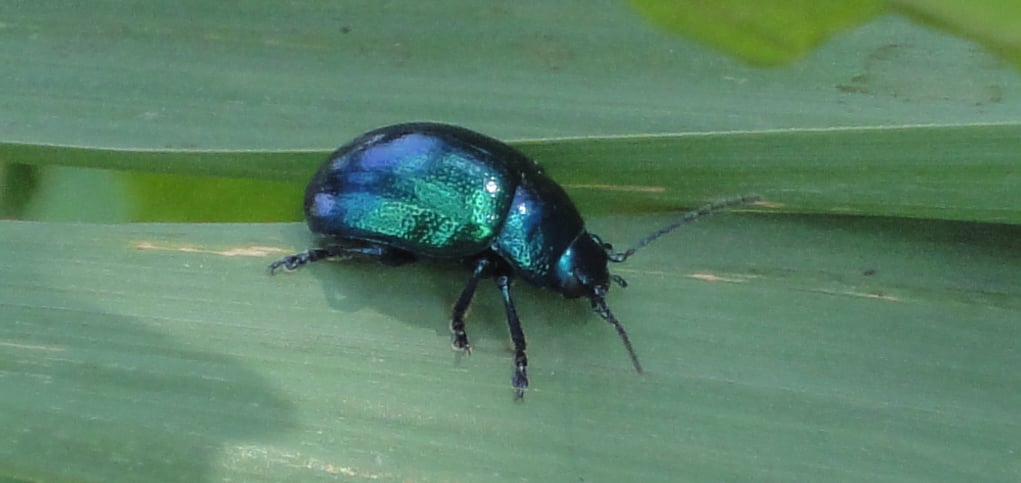
What comes to mind when you think of lavender? A pleasant and sweet smell, right? It is not the same for the blue mint beetle. Unlike humans and animals, these beetles are repulsed by the smell of lavender and actively avoid places where such smells are strong. To prevent the beetles from infesting your mint plant, mix a few drops of lavender oil with water and spray on the leaf surfaces. Repeat one to two times every day until the infestation is controlled. This treatment is ideal for home gardens where there are kids and pets, as lavender is totally harmless and non-toxic.
6. Make Use of Insecticidal Soap
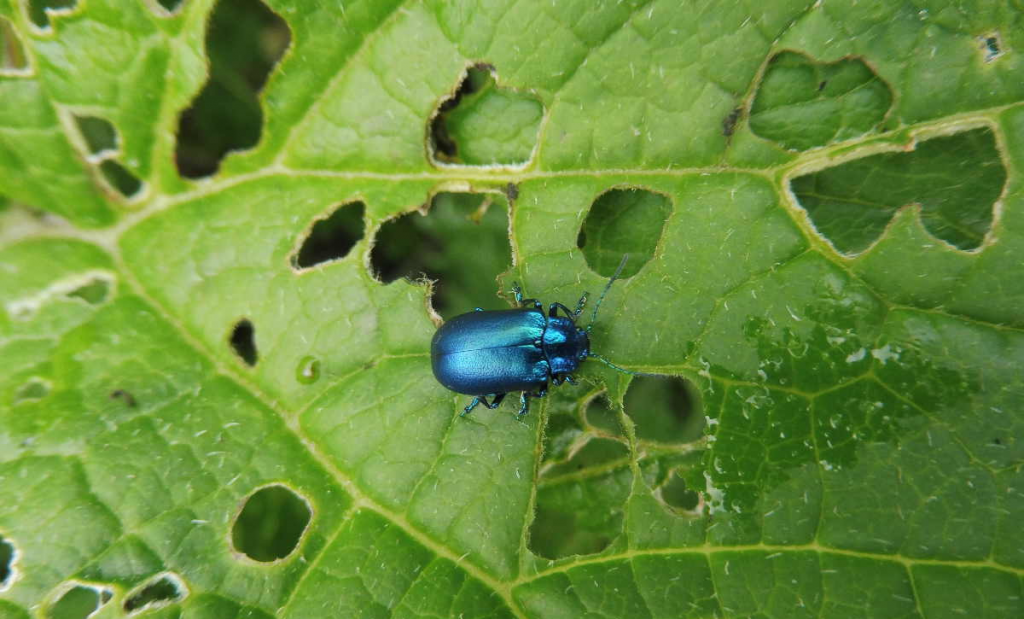
The only difference between using insecticidal soap and regular soap is that this product is specifically meant to combat pests and bugs that grow and feed on plants, very much like the blue mint beetle. Insecticidal soaps are easily available at any hardware store. It is specially infused with chemicals to kill pests, so it goes without saying that you should not spray too much of it on the plant. Some varieties are non-toxic and safe for use around children or pets. It is easy to apply and begins working quite fast. All you have to do is spot the beetles and spray it directly on them. They will squirm for a while and then drop dead.
How to Prevent Blue Mint Beetles from Coming Back?
Gardening is a labour-intensive activity, and any gardener will agree to that. Therefore the first tip for preventing blue mint beetles from making a comeback is to inspect the mint plants frequently. And if you spot eggs or larvae, then you have to remove them immediately.
For better protection, you can create physical barriers that repel or trap mint beetles. The two most commonly used barriers are installing sticky traps or diatomaceous earth in a circle around the perimeter of the plant. This works because when the blue mint beetle crawls towards the plant, they either get caught by the trap or inhale the toxic diatomaceous earth dust and dies.
Properly watering the plant is also an essential factor in keeping it protected against insect infestation, as anything but the right amount of watering will attract such pests. And finally, some gardeners plant very fragrant shrubs of lavender and peppermint close beside the infested tree to repel the insects, but this works only when the beetles fly and are forced to whiff the smell of the mentioned plants.
To Sum up!
All in all, it is easy to get confused between the blue mint beetle and other metallic blue beetles because of how close they are in colour. Some of these similar-looking beetles are willow leaf beetles and alder leaf beetle.
However, the possible way to know whether you are dealing with the blue mint beetle or any other kind is to check the plant. Blue mint beetles are always spotted on wild mint leaves, and as already mentioned, they do not pose any serious threat to the health of the plant.
By this time, the beetles should be removed immediately when spotted. If not, then they will come in increasing clusters and eat up whole leaves in a matter of weeks.
Frequently Asked Questions (FAQs)
Are Blue Mint Beetles Dangerous?
No, they are not anything to be scared about if you spot them in your garden. Because firstly, these beetles only infest a specific variety of wild mint plants, and secondly, even on wild mint, they cannot work very fast and if removed within a week of first spotting them, then damage will be minimal.
How Frequently Should I Use Insecticides?
Try and follow the non-toxic ways to control these beetles instead of going for insecticides. Exposing the plants to too many chemicals can harm the health of the plant. But if you have no other choice, then what you can do is spot the bugs one by one and spray the insecticide directly on them once every two days.
Can I Wash My Mint Plant with Soap and Water?
Yes, you absolutely can and should. Take a mild liquid soap and water mixture and spray them on the leaves. You can also use insecticidal soap for more protection. Remember to dry the leaves after you are done. Spray them. Use a soft cloth or towel to gently pat out the excess water on the leaves one at a time.

